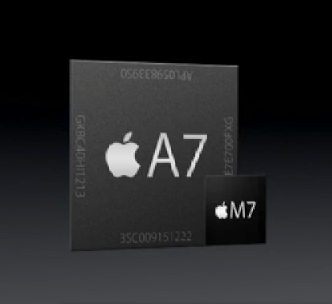How Apple's A7 64-bit chip gives iOS plenty of headroom for the future

Much has been made of Apple's A7 processor's 64-bit support, and if it's built around ARM's latest architecture as that seems to imply, then there's a lot there's a lot more to the next generation Apple processor than we're seeing.
Because when you drill down into the silicon, ARM's v8 architecture does a lot more than just increasing the addressable memory.

Perhaps the most significant change in ARMv8 is support for Type-1 hypervisors — something that's essential as it uses a virtual machine to run 32-bit code.
More iPhone and iOS 7
Like Intel's and AMD's x64 processors, a Type-1 Hypervisor lets you run virtual machines directly on the silicon, with separate partitions for each VM and no need for resource-hogging emulation layers. There's also support for common cryptographic algorithms in silicon, with instruction set calls that speed up access to the functions needed to deliver secure encrypted file systems.
So what can Apple do with a virtualisation-ready processor that can handle encryption very fast indeed, coupled with a biometric sensor?
One big problem facing mobile devices in the enterprise is how to separate the secure and the public.
BlackBerry has chosen to handle it in software using features of its QNX to build secure encrypted partitions for work and for home, but that required throwing away an entire OS and the ecosystem that had been built on it.
With WinRT (and Windows Phone) Microsoft has started the migration to an architecture that supports separate partitions for each application, by introducing deep sandboxing for WinRT apps with cross-sandbox contracts for inter-application communication.
With a virtualisation-ready processor in its new phone, Apple can now start to move iOS in the direction of a hypervisor-controlled sandbox environment, perhaps using a technology like Microsoft's research OS Drawbridge.
Here the operating system component of a VM is tailored to the application it is hosting – minimising the attack surface of each secure partition. Combined with a fingerprint sensor to identify users, Apple has the tools it needs to deliver biometric access control, allowing devices to support multiple users, with files and apps for one user hidden from another using hardware encryption.
While iOS doesn't support this approach currently, it's a logical extension of the current iOS security model, which uses selectively encrypted sections of the file system to secure application-specific data. It's also an approach that would allow apps written for an older version of iOS to continue to run, in their own dedicated partition, without the security features that newer apps, in their individual partitions, could use. That way there'd be backward compatibility, allowing Apple to deliver a more secure, enterprise-friendly, iOS without destroying its existing ecosystem.
ARMv8 is a powerful platform, and Apple's silicon designers will be adding their own features to their silicon alongside ARM's own technologies. That means there are many more options for Apple to deliver a next-generation operating system on its silicon beyond what we know about ARM's roadmap and technologies. Controlling its own silicon gives Apple a distinct competitive advantage, even when building on the same foundation as its competitors in the Android, Windows Phone, Windows RT and BB10 camps.
Whatever Apple is planning with the A7, don't expect to see any real benefits until iOS8, if then. What the iPhone 5s (and any future A7-based iPads) is, is a "get the hardware out there" play. Apple needs a critical mass of virtualisation-ready iDevices before it makes any significant changes to the OS – much like Microsoft had to wait for a critical mass of Xeon servers before making its server OS 64-bit only.
But when that critical mass is there? Apple will be able to quickly roll out massive changes to its OS with the minimum of disruption to users – especially with many of them upgrading their devices every two years. Until then, well, you're getting a faster SOC, with more features and improved graphics performance.
And further in to that future? As ARMv8 can be used to build "desktop-grade" processors, could we see Apple stepping back from Intel to its own ARM-based Macintosh hardware? It's certainly easier to use ARMv8 to emulate x86, and x64, instructions, so Apple could deliver an ARM OS X that could run existing code in a VM, with new ARM compiled code running in its own sandboxes. And that could be a very, very interesting tomorrow.